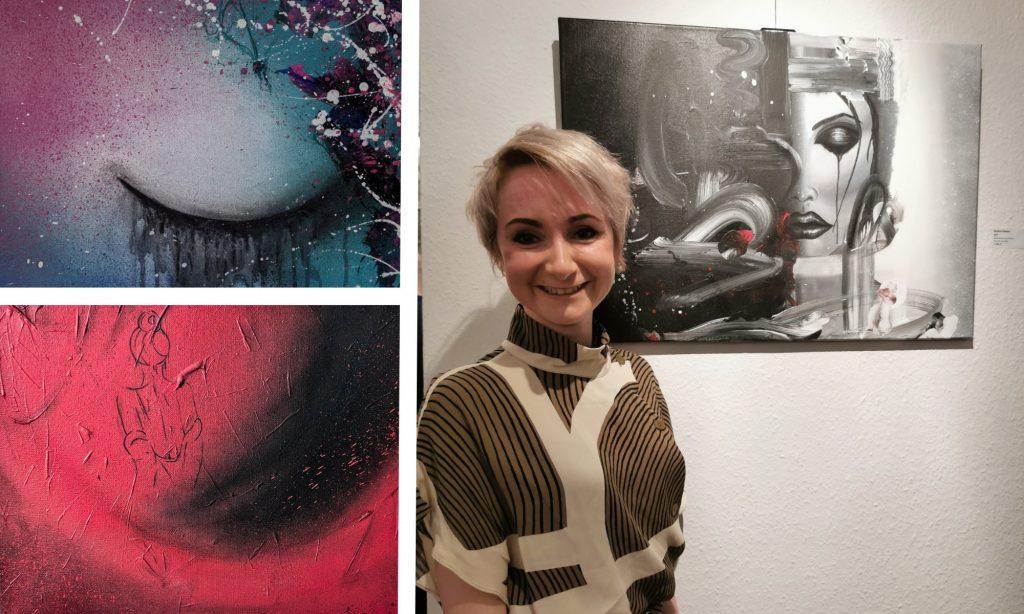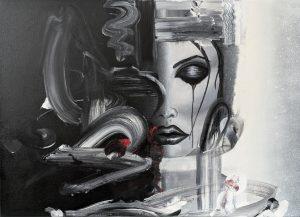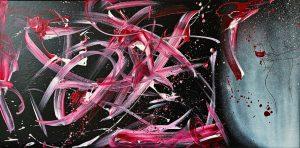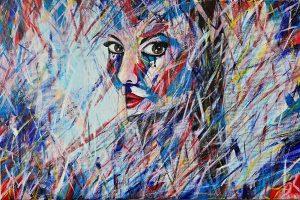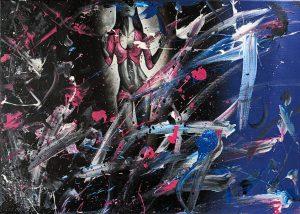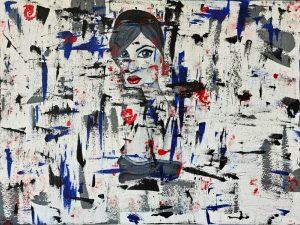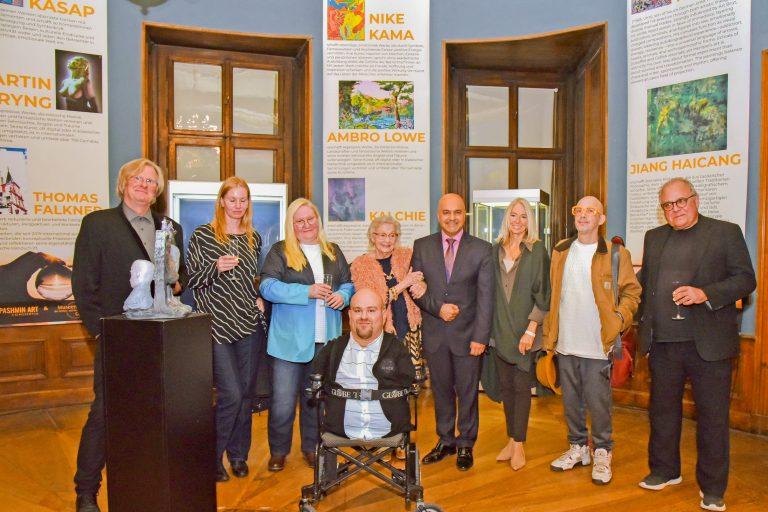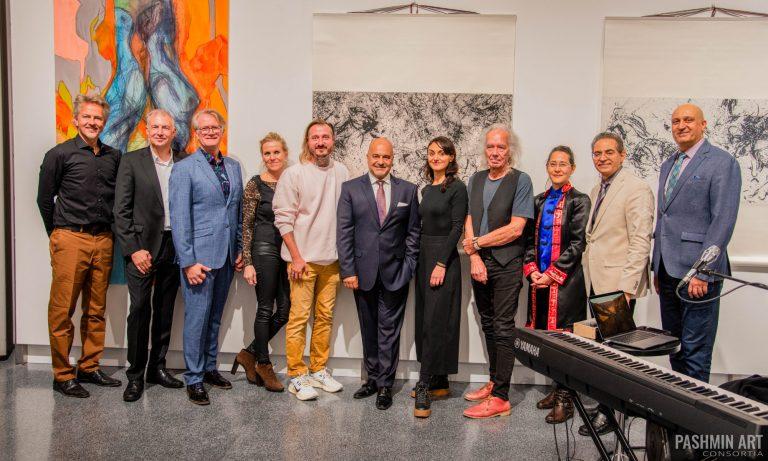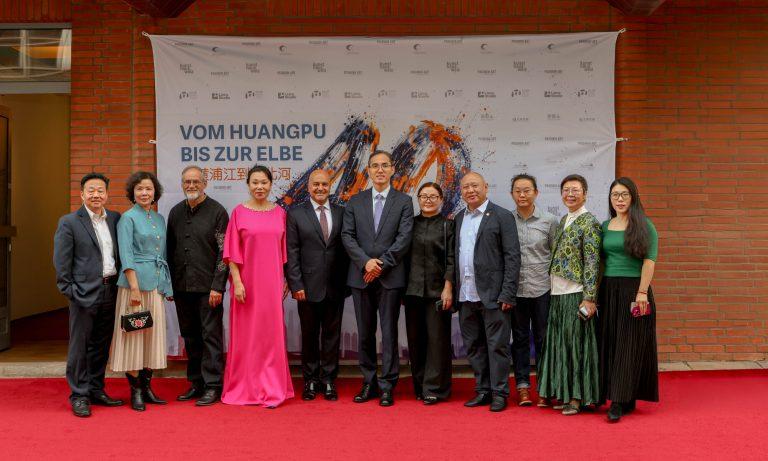Nadine Siebert: Art as a Mirror to the Invisible
Nadine Siebert’s art is a profound exploration of the unseen layers of human existence—those hidden depths that lie beneath the surface of everyday life. Through vivid colors, dynamic forms, and bold contrasts, her work creates a bridge between the external world and the inner self, inviting viewers to embark on an immersive journey of introspection and emotional discovery. For Siebert, art is far more than an aesthetic pursuit; it is a powerful and healing force—a source of inspiration, authenticity, courage, and human connection.
Her vision is rooted in themes of depth, equality, free expression, and self-determination. Siebert’s paintings illuminate the full spectrum of the human experience—from radiant light to profound shadow—encouraging an embrace of life’s complexity and the beauty found within imperfection.
The Technique Behind the Vision
Siebert’s distinctive style emerges from her innovative use of mixed media on stretched canvases. She combines the controlled precision of acrylic painting with the spontaneous energy of graffiti, employing spray cans to inject vitality and texture. This fusion is complemented by the interplay of intense contrasting colors and monochromatic grisaille technique, the tactile quality of impasto brushwork, and the delicacy of fine line art. Her canvases pulse with life, layering abstract forms with figurative elements to evoke emotional depth and narrative complexity.
Central to her work are abstract paintings that focus on female nudes and portraiture, through which she explores powerful themes such as struggle, pain, revolution, power and loss.
Tracing an Evolution
Siebert’s artistic journey unfolds through some five recognizable key phases, each marking a shift in her exploration of abstraction, figuration and emotional expression.
Phase 1: Crude Lines in Abstract Spaces
Her early works, including Zum Trotz (2023), Zweifel (2023), and psst (2022), reveal canvases where abstract splashes dominate, yet figures and faces remain sketched with raw, crude lines rather than fully rendered. This tension between controlled linearity and wild brushstrokes creates a palpable emotional urgency, reflecting fractured identities caught amidst chaos.
Phase 2: Abstract Patchwork with Embedded Figures
Progressing to works like Freigeist (2023) and Revolution (2024), Siebert’s canvases grow richer and more complex. Here, fragmented human forms emerge from vibrant, layered blocks of color, merging figuration and abstraction into a cohesive dialogue about identity amid transformation.
Phase 3: Dual-Sectioned Compositions
A distinctive approach emerges in pieces such as Pain (2024), Female Power (2024), and Crash (2024), where canvases are divided into two contrasting visual fields. One side often features a bold figurative element, while the other presents abstract textures and colors. In Pain, Siebert’s nearly monochromatic palette and partially obscured female figure convey intense themes of suffering and resilience. This compositional split heightens psychological tension, juxtaposing chaos and calm, shadow and light.
Phase 4: Figurative Focus with Abstract Undercurrents
Her most recent works, including Augen-Blick (2024) and Closed (2025), focus more intimately on faces and eyes, inviting deep reflection on perception and vulnerability. These pieces retain abstract, fragmented backgrounds, symbolizing the fluidity of memory and emotion. Closed, in particular, balances the quiet sorrow of a tear-streaked closed eye with vibrant splashes of magenta, turquoise and purple—capturing the complex coexistence of inner pain and outward expression.
Phase 5: The Power of Abstraction
Alongside these figurative explorations, Siebert continues to create fully abstract works like Perfect Day and Regenbogenland (2025). These paintings harness dynamic brushwork and vibrant color interplay to craft immersive atmospheres untethered from direct representation. They highlight the fluid boundary in her practice between pure abstraction and figurative expression, enriching the emotional breadth of her oeuvre.
About the Artist
Nadine Siebert was born on September 25, 1987, in Bremen. She has a brother and has been living with her husband for several years in a small village situated between Bremen and Hamburg.
Alongside her passion for art, animals and nature hold a special place in her heart, providing a space where she regularly recharges. Meditation and training in Life Trust Coaching help her stay centered and support her ongoing personal development, which runs parallel to her role as a department head at Bild der Frau.
Throughout her life, she has been deeply interested in themes such as personal growth, inner peace, and meaningfulness, as well as the search for perfection within imperfection and the desire to unite light and shadow. Her art serves as an expression of these explorations, which she pursues with continuous intensity.
Conclusion
Nadine Siebert’s art offers a vivid and compelling journey through the complexities of the human condition. Her mixed-media technique—melding the raw energy of graffiti with painterly impasto and refined line art—produces canvases that are both visually striking and emotionally profound. From the raw immediacy of her early line work, through sophisticated dual-sectioned narratives, to intimate studies of gaze and emotion, Siebert invites viewers into a world where visibility and obscurity, light and shadow, order and chaos coexist.
© Copyright of the text belongs to Dr. Davood Khazaie
